Hormoz Shahrzad
GPU-Accelerated Rule Evaluation and Evolution
Jun 03, 2024Abstract:This paper introduces an innovative approach to boost the efficiency and scalability of Evolutionary Rule-based machine Learning (ERL), a key technique in explainable AI. While traditional ERL systems can distribute processes across multiple CPUs, fitness evaluation of candidate rules is a bottleneck, especially with large datasets. The method proposed in this paper, AERL (Accelerated ERL) solves this problem in two ways. First, by adopting GPU-optimized rule sets through a tensorized representation within the PyTorch framework, AERL mitigates the bottleneck and accelerates fitness evaluation significantly. Second, AERL takes further advantage of the GPUs by fine-tuning the rule coefficients via back-propagation, thereby improving search space exploration. Experimental evidence confirms that AERL search is faster and more effective, thus empowering explainable artificial intelligence.
Asynchronous Evolution of Deep Neural Network Architectures
Aug 08, 2023Abstract:Many evolutionary algorithms (EAs) take advantage of parallel evaluation of candidates. However, if evaluation times vary significantly, many worker nodes (i.e.,\ compute clients) are idle much of the time, waiting for the next generation to be created. Evolutionary neural architecture search (ENAS), a class of EAs that optimizes the architecture and hyperparameters of deep neural networks, is particularly vulnerable to this issue. This paper proposes a generic asynchronous evaluation strategy (AES) that is then adapted to work with ENAS. AES increases throughput by maintaining a queue of upto $K$ individuals ready to be sent to the workers for evaluation and proceeding to the next generation as soon as $M<<K$ individuals have been evaluated by the workers. A suitable value for $M$ is determined experimentally, balancing diversity and efficiency. To showcase the generality and power of AES, it was first evaluated in 11-bit multiplexer design (a single-population verifiable discovery task) and then scaled up to ENAS for image captioning (a multi-population open-ended-optimization task). In both problems, a multifold performance improvement was observed, suggesting that AES is a promising method for parallelizing the evolution of complex systems with long and variable evaluation times, such as those in ENAS.
Accelerating Evolution Through Gene Masking and Distributed Search
Feb 13, 2023



Abstract:In building practical applications of evolutionary computation (EC), two optimizations are essential. First, the parameters of the search method need to be tuned to the domain in order to balance exploration and exploitation effectively. Second, the search method needs to be distributed to take advantage of parallel computing resources. This paper presents BLADE (BLAnket Distributed Evolution) as an approach to achieving both goals simultaneously. BLADE uses blankets (i.e., masks on the genetic representation) to tune the evolutionary operators during the search, and implements the search through hub-and-spoke distribution. In the paper, (1) the blanket method is formalized for the (1 + 1)EA case as a Markov chain process. Its effectiveness is then demonstrated by analyzing dominant and subdominant eigenvalues of stochastic matrices, suggesting a generalizable theory; (2) the fitness-level theory is used to analyze the distribution method; and (3) these insights are verified experimentally on three benchmark problems, showing that both blankets and distribution lead to accelerated evolution. Moreover, a surprising synergy emerges between them: When combined with distribution, the blanket approach achieves more than $n$-fold speedup with $n$ clients in some cases. The work thus highlights the importance and potential of optimizing evolutionary computation in practical applications.
Evolution of Transparent Explainable Rule-sets
Apr 21, 2022



Abstract:Most AI systems are black boxes generating reasonable outputs for given inputs. Some domains, however, have explainability and trustworthiness requirements that cannot be directly met by these approaches. Various methods have therefore been developed to interpret black-box models after training. This paper advocates an alternative approach where the models are transparent and explainable to begin with. This approach, EVOTER, evolves rule-sets based on simple logical expressions. The approach is evaluated in several prediction/classification and prescription/policy search domains with and without a surrogate. It is shown to discover meaningful rule sets that perform similarly to black-box models. The rules can provide insight to the domain, and make biases hidden in the data explicit. It may also be possible to edit them directly to remove biases and add constraints. EVOTER thus forms a promising foundation for building trustworthy AI systems for real-world applications in the future.
DIAS: A Domain-Independent Alife-Based Problem-Solving System
Mar 14, 2022



Abstract:A domain-independent problem-solving system based on principles of Artificial Life is introduced. In this system, DIAS, the input and output dimensions of the domain are laid out in a spatial medium. A population of actors, each seeing only part of this medium, solves problems collectively in it. The process is independent of the domain and can be implemented through different kinds of actors. Through a set of experiments on various problem domains, DIAS is shown able to solve problems with different dimensionality and complexity, to require no hyperparameter tuning for new problems, and to exhibit lifelong learning, i.e. adapt rapidly to run-time changes in the problem domain, and do it better than a standard non-collective approach. DIAS therefore demonstrates a role for Alife in building scalable, general, and adaptive problem-solving systems.
Effective Reinforcement Learning through Evolutionary Surrogate-Assisted Prescription
Feb 13, 2020
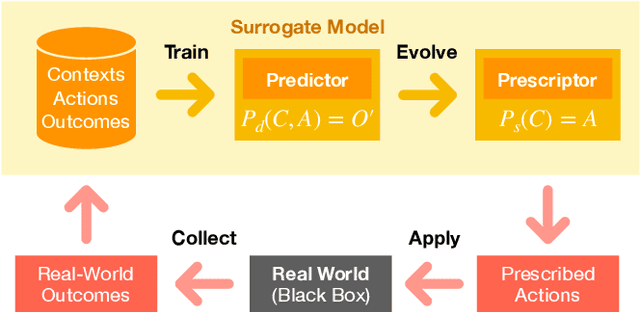

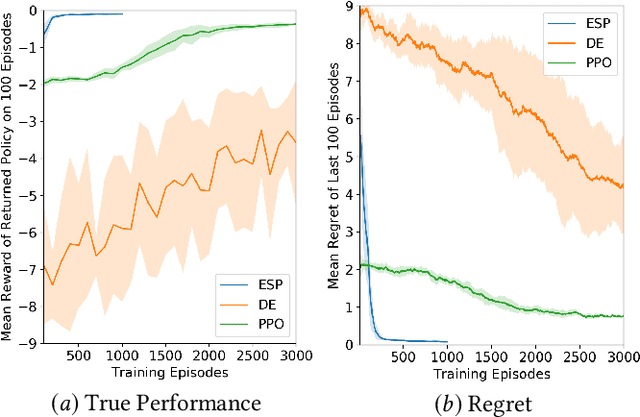
Abstract:There is now significant historical data available on decision making in organizations, consisting of the decision problem, what decisions were made, and how desirable the outcomes were. Using this data, it is possible to learn a surrogate model, and with that model, evolve a decision strategy that optimizes the outcomes. This paper introduces a general such approach, called Evolutionary Surrogate-Assisted Prescription, or ESP. The surrogate is, for example, a random forest or a neural network trained with gradient descent, and the strategy is a neural network that is evolved to maximize the predictions of the surrogate model. ESP is further extended in this paper to sequential decision-making tasks, which makes it possible to evaluate the framework in reinforcement learning (RL) benchmarks. Because the majority of evaluations are done on the surrogate, ESP is more sample efficient, has lower variance, and lower regret than standard RL approaches. Surprisingly, its solutions are also better because both the surrogate and the strategy network regularize the decision-making behavior. ESP thus forms a promising foundation to decision optimization in real-world problems.
Enhanced Optimization with Composite Objectives and Novelty Pulsation
Jun 07, 2019



Abstract:An important benefit of multi-objective search is that it maintains a diverse population of candidates, which helps in deceptive problems in particular. Not all diversity is useful, however: candidates that optimize only one objective while ignoring others are rarely helpful. A recent solution is to replace the original objectives by their linear combinations, thus focusing the search on the most useful trade-offs between objectives. To compensate for the loss of diversity, this transformation is accompanied by a selection mechanism that favors novelty. This paper improves this approach further by introducing novelty pulsation, i.e. a systematic method to alternate between novelty selection and local optimization. In the highly deceptive problem of discovering minimal sorting networks, it finds state-of-the-art solutions significantly faster than before. In fact, our method so far has established a new world record for the 20-lines sorting network with 91 comparators. In the real-world problem of stock trading, it discovers solutions that generalize significantly better on unseen data. Composite Novelty Pulsation is therefore a promising approach to solving deceptive real-world problems through multi-objective optimization.
Enhanced Optimization with Composite Objectives and Novelty Selection
Jul 05, 2018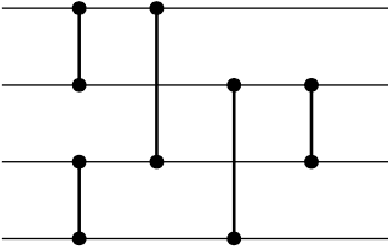
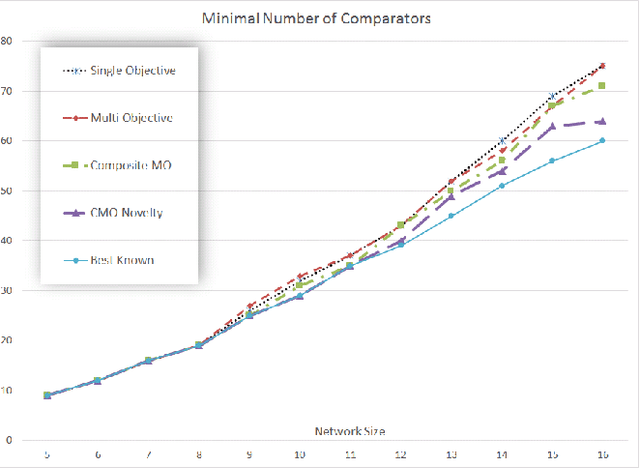
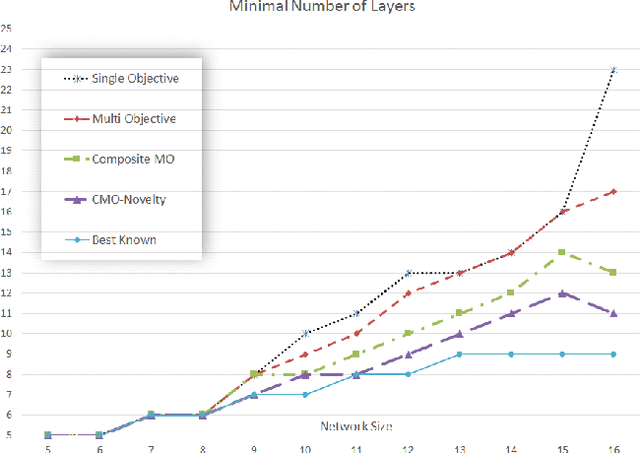
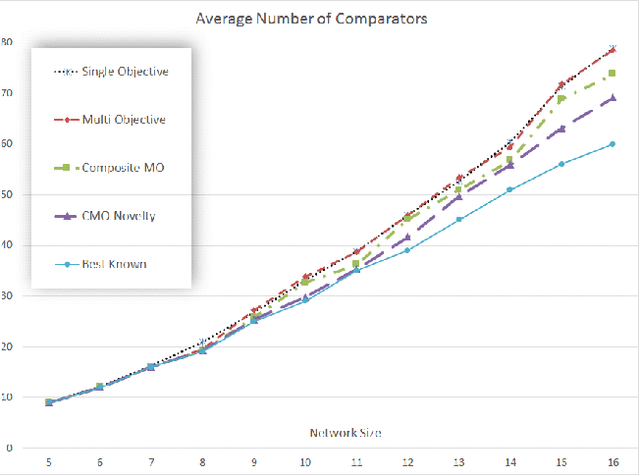
Abstract:An important benefit of multi-objective search is that it maintains a diverse population of candidates, which helps in deceptive problems in particular. Not all diversity is useful, however: candidates that optimize only one objective while ignoring others are rarely helpful. This paper proposes a solution: The original objectives are replaced by their linear combinations, thus focusing the search on the most useful tradeoffs between objectives. To compensate for the loss of diversity, this transformation is accompanied by a selection mechanism that favors novelty. In the highly deceptive problem of discovering minimal sorting networks, this approach finds better solutions, and finds them faster and more consistently than standard methods. It is therefore a promising approach to solving deceptive problems through multi-objective optimization.
Evolving Deep Neural Networks
Mar 04, 2017
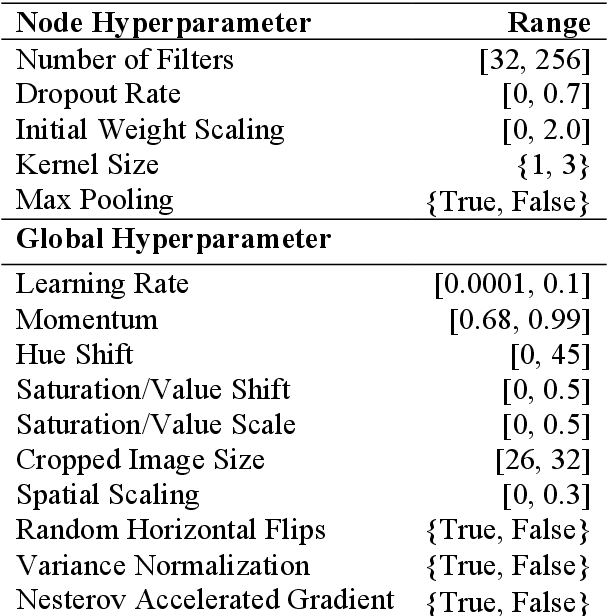
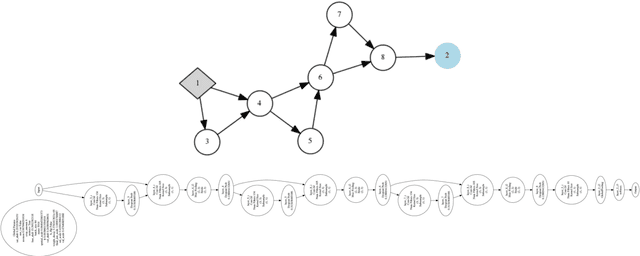
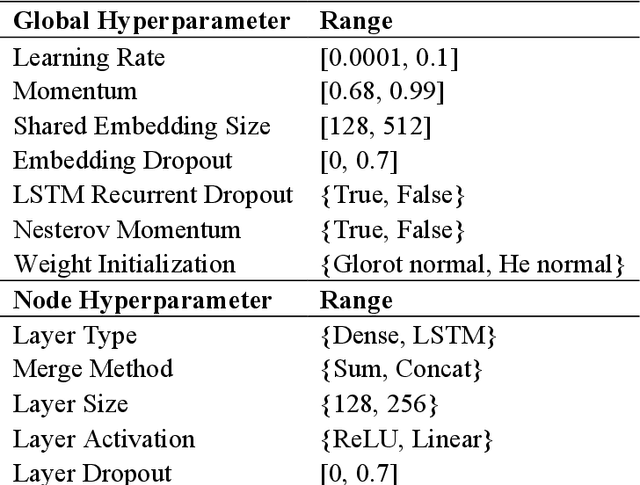
Abstract:The success of deep learning depends on finding an architecture to fit the task. As deep learning has scaled up to more challenging tasks, the architectures have become difficult to design by hand. This paper proposes an automated method, CoDeepNEAT, for optimizing deep learning architectures through evolution. By extending existing neuroevolution methods to topology, components, and hyperparameters, this method achieves results comparable to best human designs in standard benchmarks in object recognition and language modeling. It also supports building a real-world application of automated image captioning on a magazine website. Given the anticipated increases in available computing power, evolution of deep networks is promising approach to constructing deep learning applications in the future.
 Add to Chrome
Add to Chrome Add to Firefox
Add to Firefox Add to Edge
Add to Edge